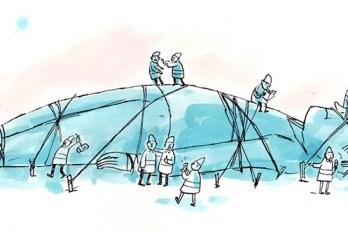Ten years ago, when a player cut across the middle of the ice looking back for a pass and a defender cruised into range, unseen, and knocked him senseless, you would hear from the fans an “Oh, wow,” followed by a giggle. Ten years later, same player, same defender, same thunderous collision, but now what you hear from the fans is an “Oh, wow,” followed by a giggle, followed by a body-cringing “Oooooh.” Progress. Concussion is now less about awareness of the problem than about awareness of the solution.
In the next ten years, the focus will be on research to discover a reliable marker for determining whether a concussion has been suffered. It will be on learning what combination of rest, exercise, medication, and so on will enable the brain to heal faster and better. It will be on determining whether mild brain injuries, now thought by some to be insignificant, do have serious cumulative effects, while others, now considered significant, can be treated like a sprained shoulder or a twisted knee—or not. It will be on identifying the connections, if any, between concussions and chronic traumatic encephalopathy, and between CTE and dementia, amyotrophic lateral sclerosis (Lou Gehrig’s disease), Parkinson’s, and other neurodegenerative diseases that shorten or dramatically diminish life. It will be on getting whatever is learned to the grassroots—players, coaches, parents, league officials, doctors—so it becomes the new common sense.
There are so many questions still to be answered. Can equipment manufacturers make helmets that reduce the number and severity of concussions? Will lawsuits force the hands of the people who run professional sport? (Nearly 4,500 former players are now suing the National Football League.) What about the cost of insurance premiums? What if parents come to regard football and hockey as “extreme sports,” games kids should watch but not play—what then? And what about the players? Will they take their futures into their own hands? Will they imagine new ways to play the game, whatever the game, just as effectively but with less risk? Will their coaches work with them to develop strategies that reduce the number of injuries and improve a team’s chances of winning? Will the players’ wives get involved? Will their agents?
In the next ten years, the focus will be on finding the real answers among those that are only possible or hoped for. It will be on exposing the snake oil salesmen who now peddle their concussion remedies to the hopeful and fearful. It will be on finding answers consistent with the dimensions of the problem. An answer too small is no answer at all. So, too, is an answer too late. Science must take the time it needs, but games are played tomorrow. The focus will be on collaboration—on medical researchers, players, and coaches not pointing fingers at each other, but engaging in conversations that make progress possible. Finally, the focus in the next ten years will be on action, because the future is not made by being right about the past or the present. It is not made by adding more problems to the mountain we already face, hoping to embarrass decision makers into action. A bigger mountain only seems more hopeless, less worthy of a try. Because where there’s a way, there’s a will—not the other way around.




